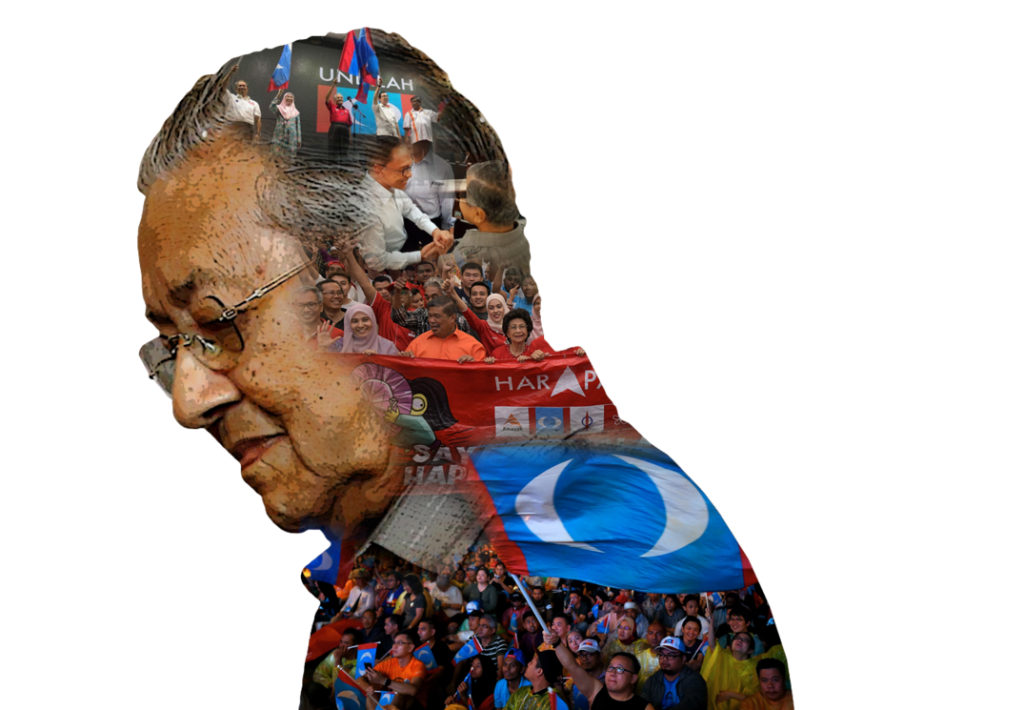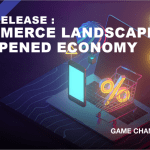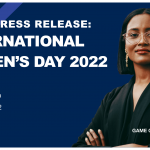Machine learning algorithm dive into Malaysians feelings & leanings on GE14 battle of the parties on Twitter-verse
After Malaysia’s 14th General Election, The Center of Applied Data Science (CADS) analysed how the last few moments of any election campaign can ultimately make or break the efforts of weeks and even months’ worth of election campaigning and lobbying.
Focusing on Twitter data, CADS studied Tweets from the last campaign day (May 8th) and Election Day itself (May 9th), to see if there were any sentiment-altering events within this timeframe, and what impact it could have on the election.
Additionally, a total of 155,615 tweets was collected from 1st March to 5th May related to the General Election providing a collection of insights and patterns validating initial insights and ultimately leading way to the results that GE14 uncovered for Malaysia.

To Social Media or Not To Social Media?
The biggest gap that CADS picked up from its initial report was the social media maturity that the three competing coalitions had going into GE14.
The Gagasan Sejahtera (GS), an informal coalition between Parti Islam Se-Malaysian (PAS) and Parti Ikatan Bangsa Malaysia (IKATAN).
GS chose to employ a more grassroots-driven engagement that translates well for their “personal touch” feel, consistently driven from the inception of the party.
This left GS going into the election with an almost bare-minimum social media presence where most of the content in the Twitter-space was general mentions rather than deliberate content development.
The Pakatan Harapan (PH) coalition was the clear champion in terms of social media maturity walking into the GE14.
Faced with the growing perception (and numerous instances where perceptions were proven reality) that the Malaysian mainstream media was heavily controlled by the BN, PH turned to its active, mature and highly connected network of social media interfaces going into GE14.
They depended on this social media presence not just as an election engine, but also to get their message out to the people and actively correcting any misrepresented content delivered by the mainstream Malaysian media.
Knowingly or unknowingly, by actively leveraging the social media of each component party in the PH coalition, they built up a message of Hope, Unity and Nationhood that then became the overtone of the entire PH coalition.
This commanding presence easily consumed BN, which consisted of several long-standing component parties (i.e. UMNO, MCA, MIC, Gerakan, etc.) but only adopted a social media presence built around the chairman of the BN.
This pattern of insights consistently appeared on party-specific Influencer Galaxies that were created in all three renditions of the study.
Malaysia’s GE14 is an example where social media presence can make or reshape the face of an election.
What’s Your Campaign Story
Having a fairly dormant social media presence pre-GE14, BN developed a campaign theme of accelerating the development of the nation via Rakyat-driven manifesto pillars (i.e., Affordable Housing, Youth Development, Digital Enhancement, etc.).
While this is a solid campaign story for any run-of-the-mill coalition party, the first mistake of the BN Election Engine was that they did not consider the legacy that BN has engineered.
A coalition party that has remained in power for so long needed a more impactful and game-changing ideation that would have reassured the Rakyat, should they be voted to stay.
The second mistake that BN may have made in their election engine is to build the brand story on the Chairman of the BN coalition.
Conditional on the thought process that this was a conscious decision made by the BN coalition to revert the ground sentiment, which was unfortunately built around the caretaker PM and BN Coalition Chairman, the coalition unintentionally created a sustained, steady preservation of the negative sentiment without any active efforts to address it.
This was evident via the Keywords Analysis that we ran on all three of our renditions, where the positive sentiment from BN were extract verbatim from press releases and manifesto content from the BN Coalition Leadership, while the negative sentiment for the BN Coalition consistently picked up keywords and themes that were from issues and speculations long before the announcement of the Parliament dissolution.
On the complete opposite of the spectrum, the PH coalition component parties each had their own campaign stories, values and key sentiments that worked for the core of the party and its supporters.
This would have been a complete disaster for the coalition if the component parties stayed detached and independent in terms of their campaign stories.
However, the inability to register certain component parties and the announcement of all component parties to be represented by the Keadilan emblem during campaigning and voting, inadvertently created a whole new wave of emotions – Unification for Hope.
Supporters were stewing up negative emotions against the BN Coalition with keywords like “bendera, ROS, diturunkan” appearing in the analysis, while words like “undi, change, pledged, Negaraku” were coming up strong in support for the PH Coalition.
GS, choosing to focus on its core voter demographic, set off their campaign trails by offering their name as a “more passive alternative for change” which promised to be less radical than the image built for the PH Coalition.
While these elements were not necessarily picked up actively in the Sentiment Analysis, a deeper-look into the themes of the Twitter elements that did contain GS consistently portrayed them as “the other party”.
Not the perfect image for a vocal opposition front protecting the needs of the Rakyat but ideal enough for a party calling to preserve the existing harmonious environment of peace while still bringing changes.
It was a successful campaign position for PAS, particularly in Kelantan and Terengganu that hold the lowest Broadband Penetration Rate per 100 inhabitants in West Malaysia (released for Q4 2017, by MCMC) at 75.7% and 81.9% respectively and even emerging the “kingmaker” in the formation of certain state governments in GE14.
Significance of the Final Battle Cry
Four distinct influx points of the Twitter events generation were identified during the 8th and 9th May 2018. On the 8th May 2018, 12pm period, there were an increased generation of Twitter events contributing to the announcement that the Chairman of the BN Coalition will be making a “special announcement” later that night.
A vague indication of upcoming “special message” in a time where distrust is the go-to sentiment for the general population, naturally, the BN Coalition remained on the negative sentiment up to the point of announcing the “special address”.
Data also revealed that the BN Coalition saw minimal organic content generated from the voters contributing to the positive sentiment for BN. However, the negative sentiment associated with the BN Coalition saw a high volume of organic content generated which not only came from the PH Coalition but also the public.
The Ruling Coalition did not incorporate the efforts needed to correct the negative sentiments tagged well ahead of GE14, and instead created an Election Engine which did not appear to address voter sentiment.
Understanding this dynamic, the Final Battle Cry wherein it was announced the promise for income tax exemption for citizens aged 26 and below, two days of public holiday post GE14 and five days of toll charges suspension during the upcoming Eid Aidilfitri celebrations were an unfortunate alignment to the negative “cash is king” perception that was evident in early analysis of the BN Coalition.
Simple analytics using pre-election datasets and living dashboard of sentiments would have given the BN Coalition room to manoeuvre the development and delivery of their content.
Instead, the inability to adapt and recalibrate strategically against the volatile and highly emotional voter sentiment essentially spelt the fall of a six-decade coalition party that started off as the very coalition that helped build our nation.
The Pakatan Harapan Coalition, once again either by sheer lucky coincidences or brilliant yet subtle social strategizing, constructed the perfect “David vs Golliath” narrative that held strong into Polling Day.
Capitalizing on BN’s single-persona brand built around its Chairman along with overwhelming negative sentiments that were not only addressed as a matter-of-national-interest, but chided as “ridiculous personal attacks”, the PH Coalition emerged as a solid coalition party with the credibility of a former Prime Minister strongly advocating for the glory days of Malaysia at its helm.
Using an online social media platform to broadcast their own Final Battle Cry, they promised a potential government that would guide a nation out from its dark moments into the light of its prime.
The words used in the “Amanat Malam Terakhir” delivered by the Chairman of the PH Coalition were straight-forward, infused with overtones of imploring the Rakyat for the opportunity to heal national wounds, while constantly using keywords that were a strong reminder of the growing negative sentiment against the BN Coalition.
The trending of sentiment following the conclusion of the final campaign speeches by both the BN and PH Coalition Chairmen made it clear that the keywords the PH Coalition used (i.e., “sogokan, gadaikan, selamatkan) not only nullified the positive sentiments that the BN Coalition may have with the announcement of their election goodies, but instead evoked a completely different purpose for GE14.
It was not just an exercising of a voter’s democratic right, it was the responsibility to save the sovereignty of our nation.
To some these may be deliberate political strategies played, but the data was already revealing these patterns and sentiments even before the dissolution of Parliament in April.
What analytics lessons can be drawn from the 2018 Malaysia election?
The answer is plenty, according to Sharala Axyrd, CEO of CADS, especially those for those in the business world. “First and foremost, businesses need to rely more on a data-driven approach and measured performance and less on gut instinct when data and analytics are available.
“It may require a cultural change and paradigm shift in some organizations. Second, understanding consumer behaviour, sentiment and purchase pattern, predicting the next sales opportunity and most profitable customer, segmenting and micro-targeting the right population with tailored messages that resonate with customers are the challenges faced by almost every business.”

Is the Customer at the heart of your Digital Transformation?
On 19th of July, MARKETING will be organising a conference on Customer-Centric Digital Transformation (#DTCX2018) to help you answer that question. The conference will be driven by Paul Stewart who authored the best-seller ‘Branded Customer Service’ and currently is the Special Advisor, Strategy & Transformation for TMI Malaysia. Drawing from his 25 years of diverse experience as a Chief Economist, CEO and consulting in organisational change, transformation and innovation Paul will be sharing his learnings and current trends in this realm.
He will be joined by key thought leaders in the areas of transformation, data analytics, customer service, branding, marketing, digital, human resources and more! Some of the key names who will be joining us include:
* Imran Kunalan Abdullah, Advisor/Principal Consultant – Digital Talent Development & Leadership and People Analytics
* George Aveling, CEO, TMI Malaysia
* Laurence Smith, Head, Asia Region, SmartUP
* Falko Leonhardt, Principal Consultant Transformation Strategy and Change, TMI
* Mohd Adam Wee Abdullah, Group CMO & Chief Customer Experience Officer, CIMB Group
* Rene Werner, Chief Customer Service & Customer Experience Officer, Celcom Axiata Berhad
and MORE!
Get ready to be inspired by case studies on transformation, honest conversations on driving change and actionable insights you can take back to implement in your organisation.
Date: 19th July 2018
Time: 8.30 am -6.00 pm
Venue: Sime Darby Convention Center, Bukit Kiara
For more information on DTCX 2018:
Click to visit DTCXJuly19 Microsite.
Download PDF Programme here.
Contact Amira [email protected] | 03 7726 2588
Book your spot early to avoid disappointment!
MARKETING Magazine is not responsible for the content of external sites.
An afternoon of conversations we never had, with leaders most of you never met.
Discover what’s possible from those who made it possible. Plus a preview of The HAM Agency Rankings REPORT 2024.
Limited seats: [email protected]
BOOK SEATS NOW









